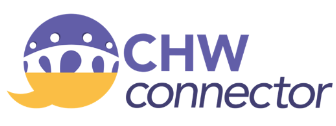What Works Toolkit Series (WWTS)
We engaged hundreds of Community Health Workers (CHWs) (including Community Health Representatives (CHRs), Promotoras, Aunties and many other titles) across the U.S. to learn about 1) “What Works” in CHW approaches and 2) CHW-led innovations to enhance health and well-being among four populations which experience longstanding health burdens: Native Americans/Alaska Natives; People experiencing homelessness; Native Hawaiians and Pacific Islanders; and People in re-entry from incarceration.

What we know: CHWs have been actively developing new approaches to 1) improve public health systems, 2) build community health capacity, 3) address barriers to health and social services, and 4) improve the health of all people in the communities they serve. Often this work comes at personal cost, extra hours, unpaid labor, out of pocket costs, and lacks funding and support for sustainability. As a result, CHW-led approaches and innovations are often not included in evidence-based literature and our public health systems lose out on this well of innovation to improve community health.
CHWs have not been adequately highlighted for their essential role in driving public health innovation as unique stakeholders.
The What Works toolkits highlight CHWs’ roles as unique stakeholders with essential expertise as “boots on the ground,” frontline public health workers, who share lived experience, health conditions and barriers, and cultural backgrounds with community members they serve.
These toolkits serve as a resource for CHWs and partners including policymakers, public health professionals, funders, employers, researchers and others seeking to strengthen and build upon what works and advance the promise of CHW-led approaches and innovation.
Our approach
The What Works Toolkit Series (WWTS) approach was guided by an expert advisory of CHW and ally Subject Matter Experts (SMEs), each of whom has decades of professional experience and often lived experience as members of these communities.
We conducted a national outreach effort to ensure broad and inclusive participation of CHWs from across the country, including 1) a national survey, 2) listening sessions, and 3) CHW case example interviews.
Almost 300 CHWs completed the survey (294 total) from 47 states, 37 Native American nations and tribes, and Puerto Rico and the U.S. Virgin Islands. Read more about our approach in the Methods sections of each toolkit. SMEs guided all aspects of the project including survey development, outreach, listening sessions, case example selection, and reporting.
What’s inside
Based on the experiences, observations, and key learnings shared by CHWs, we identified key elements of “what works” and highlight case examples and principles to illustrate the transformative potential of CHW-led innovations.
Each toolkit highlights:
- Health background, including urgent health needs and barriers facing members of each community or population;
- Key principles and elements of “what works” in CHW approaches and innovations serving members of the community;
- Case examples of CHW-led approaches and innovations to build locally tailored and culturally responsive community health capacity; and
- Principles for effective partnership for partners seeking to advance CHW-led approaches and innovation (for funders, employers, policy makers, and more).
Subject Matter Experts
- Native Americans and Alaska Natives: Mae-Gilene Begay, Ramona Dillard, Joyce Hamilton, Chief Michelle Mitchum, Iris Reano
- People in re-entry from incarceration: Teresa Campos-Dominguez, Renee Chavez-Maes, Ashley Wennerstrom, Mikayla Trujillo
- Native Hawaiians and Pacific Islanders: Chauncey Hatico, Jessanie Marques, Nicole Moore, Oreta Tupola
- People experiencing homelessness: Claudia Hartz, Catherine Gray Haywood, Angie Kuzma
Toolkits
What Works in CHW Approaches and Innovations Serving People Experiencing Homelessness
- Full toolkit
- Background: Public health needs and priorities among people experiencing homelessness: Link
- Why is CHW-led innovation important?: Link
- “What Works:” CHW-led Approaches and Innovation Serving People Experiencing Homelessness featuring Case Examples: Link
- CHW Innovation Worksheet: Link
- “What Works” for Partners: Supporting and Partnering with CHWs Serving People Experiencing Homelessness: Link
- Resources and References: Link
What Works in CHW Approaches and Innovations Serving People in Re-entry
- Full toolkit
- Background: Health, mental health, and social needs among people in re-entry from incarceration: Link
- Why is CHW-led innovation important?: Link
- “What Works:” CHW-led Approaches and Innovation with Case Examples: Link
- CHW Innovation Worksheet: Link
- “What Works” for Partners: Supporting and Partnering with CHWs Serving People in Re-entry from Incarceration: Link
- References: Link
What Works in CHW Approaches and Innovations Serving Native Hawaiians and Pacific Islanders
- Full toolkit
- Background: Health and wellbeing priorities among Native Hawaiians and Pacific Islanders (NHPI): Link
- Why is CHW-led innovation important?: Link
- “What Works:” CHW-led Approaches and Innovation serving NHPI featuring Case Examples: Link
- CHW Innovation Worksheet: Link
- “What Works” for Partners: Supporting and Partnering with CHWs serving NHPI communities: Link
- Resources and References: Link
What Works in CHW Approaches and Innovations Serving Native Americans and Alaska Natives
- Background: CHRs, health, wellbeing, and indigenous determinants of health among Native American and Alaska Natives: Link
- Why CHR-led Innovation?: Link
- “What Works:” CHR/W-led Approaches and Innovation serving Native Americans and Alaska Natives featuring Case Examples: Link
- CHR/CHW Innovation Worksheet: Link
- “What Works” for Partners: Supporting and Partnering with CHRs and CHWs serving Native Americans and Alaska Natives: Link
- Methods: CHR and CHW Participants: Link
- Resources and References: Link


